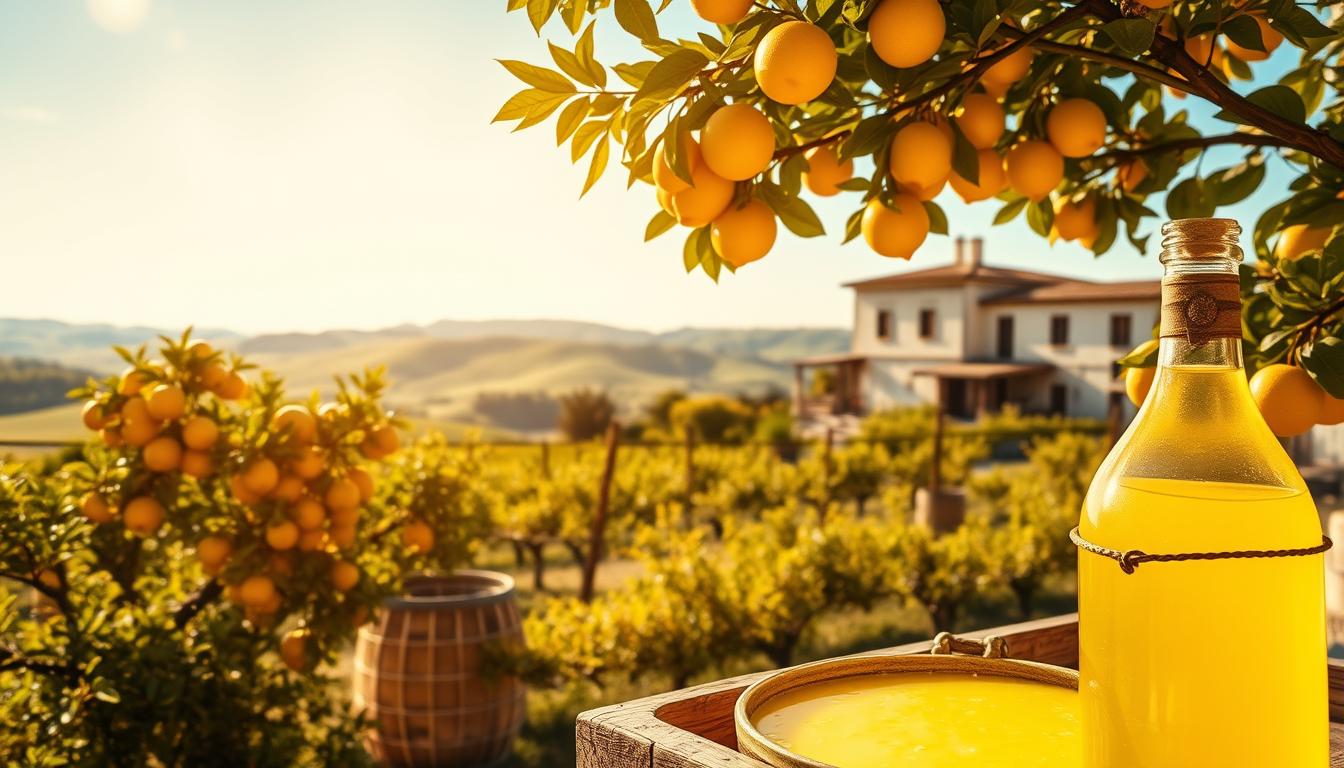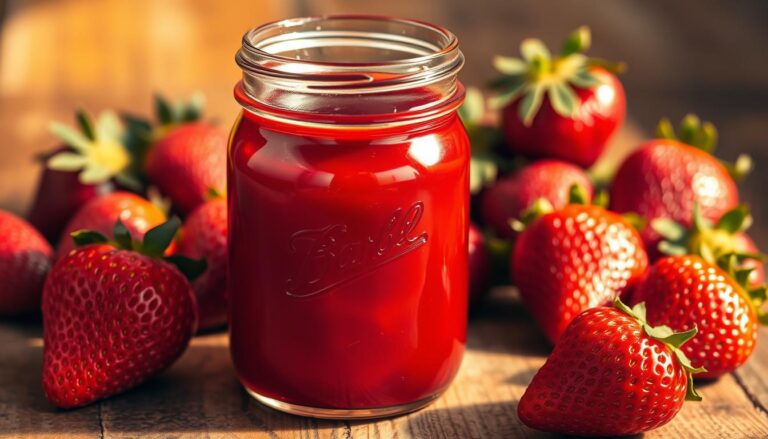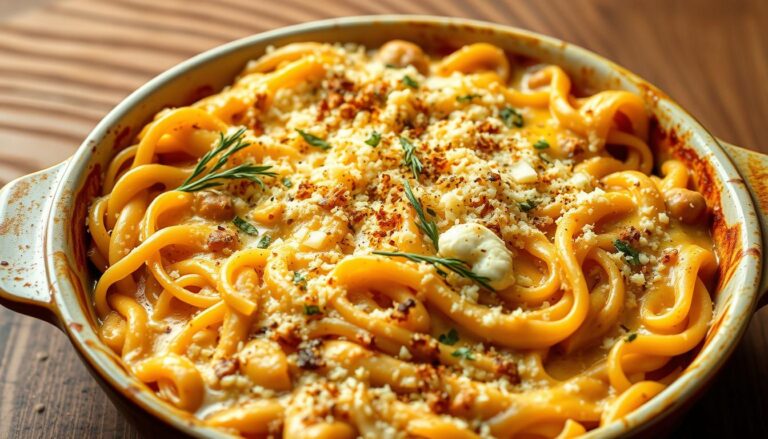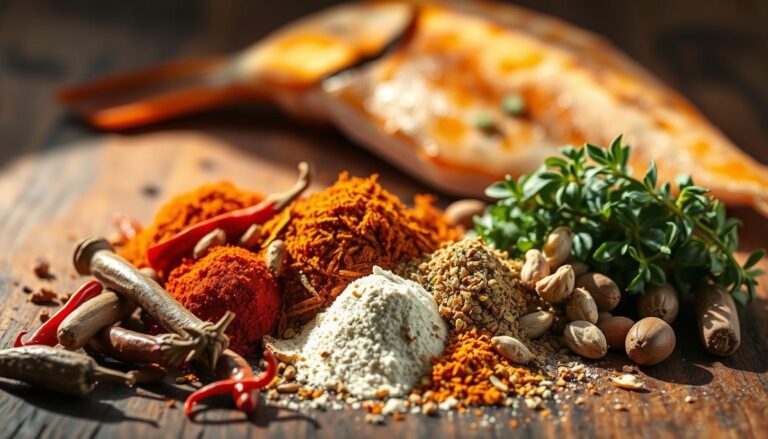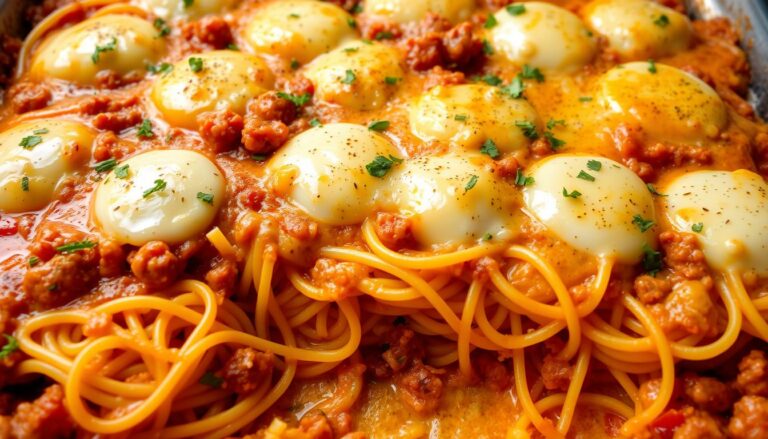What Is Limoncello and How Is It Made?
Limoncello, a classic Italian digestif, is a refreshing and tangy liqueur made from lemons, typically served chilled after meals.
The production of this iconic Italian lemon liqueur involves steeping lemon zest in a high-proof spirit, then mixing it with a simple syrup to create a sweet and citrusy flavor profile.
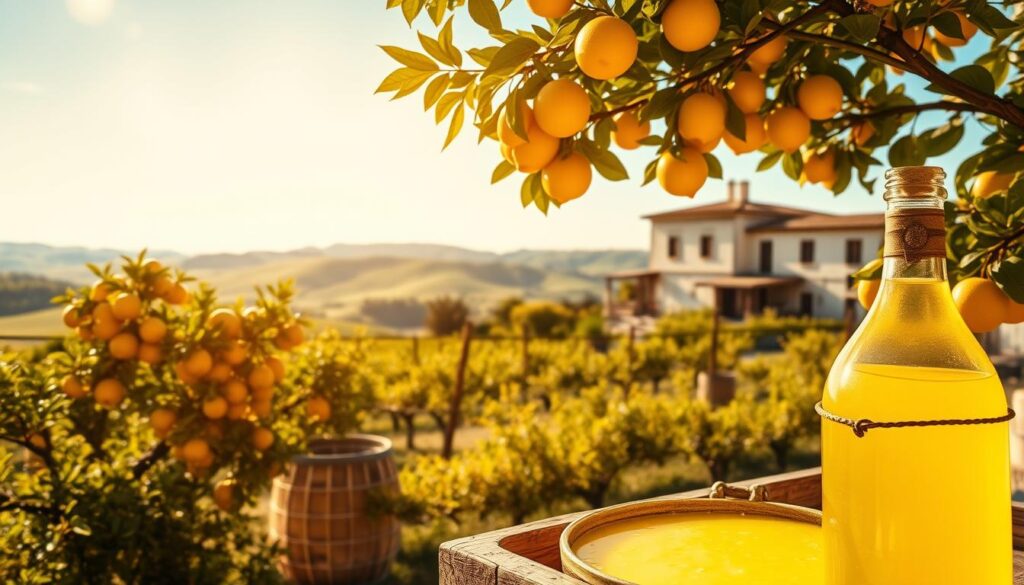
The result is a crisp and invigorating liqueur that’s perfect for warm weather or as a palate cleanser between courses.
Key Takeaways
- Discover the origins of Limoncello and its significance in Italian culture.
- Learn about the basic ingredients and equipment needed for limoncello production.
- Understand the simple process of making Limoncello at home.
- Explore the traditional ways to serve and enjoy Limoncello.
- Find out how to store Limoncello to preserve its flavor and quality.
The Origins and History of Limoncello
Limoncello, a liqueur that has become synonymous with Italian culture, has a rich history that spans centuries. Limoncello’s story is deeply intertwined with the traditions and landscapes of Italy, particularly the regions known for their lemon groves.
The Italian Roots of Limoncello
Limoncello’s origins are traced back to the southern regions of Italy, where lemons have been cultivated for centuries. The Amalfi Coast and Sorrento are particularly noted for their high-quality lemons, which are essential for producing authentic Limoncello.
The climate and soil conditions in these areas are ideal for lemon cultivation, resulting in fruits that are not only abundant but also exceptionally flavorful.
From Family Tradition to Global Phenomenon
Originally, Limoncello was produced as a family tradition, with recipes passed down through generations. It was typically served chilled, as a digestif after meals.
The transition from a family-centric production to a wider, global market phenomenon can be attributed to Italian migration and the increasing popularity of Italian cuisine worldwide.
What Exactly Is Limoncello?
Limoncello is more than just a drink; it’s an experience deeply rooted in Italian tradition. This vibrant yellow liqueur is not only a staple in Italian celebrations but also a symbol of the country’s rich culinary heritage.
Definition and Basic Characteristics
Limoncello is a lemon-flavored liqueur that originates from Italy, particularly from the Amalfi Coast and surrounding regions. It is characterized by its strong lemon flavor, typically derived from the zest of lemons, and its sweet, syrupy texture. The basic ingredients include lemon zest, alcohol, sugar, and water. The production process involves infusing lemon zest in a high-proof alcohol, then mixing it with a sugar syrup.
The resulting liqueur is usually served chilled, often as a digestif after meals to aid digestion. Its citrus flavor profile makes it refreshing and palate-cleansing. Limoncello’s alcohol content typically ranges between 25% to 30% ABV, making it a potent yet flavorful drink.
Limoncello’s Place in Italian Liqueur Tradition
Limoncello holds a special place in Italian liqueur traditions. As a digestif, it is commonly served chilled, after meals, to facilitate digestion. The tradition of serving Limoncello as a digestif is deeply ingrained in Italian culture, where mealtimes are seen as opportunities to relax and socialize.
Italian liqueur traditions are rich and varied, with different regions specializing in unique flavors and production methods. Limoncello, with its citrusy flavor, stands out among other Italian liqueurs like Grappa and Amaro. The table below highlights some key differences between these popular Italian digestifs:
| Digestif | Main Flavor Profile | Typical ABV |
|---|---|---|
| Limoncello | Citrus (Lemon) | 25-30% |
| Grappa | Fruity/Brandy-like | 35-60% |
| Amaro | Bitter/Herbal | 28-40% |
Limoncello’s popularity has spread globally, but its roots remain firmly in Italian culture. It is often enjoyed during special occasions and is a staple in many Italian households. The tradition of making Limoncello is passed down through generations, with family recipes being closely guarded secrets.
The Essential Ingredients of Traditional Limoncello
The production of authentic Limoncello hinges on the selection of a few crucial ingredients, primarily lemons, alcohol, sugar, and water. The quality and characteristics of these ingredients significantly impact the final product’s flavor and overall quality.
The Importance of Lemons
Lemons are the star ingredient in Limoncello, providing the citrus flavor and aroma that define this Italian liqueur. The choice of lemon variety is critical, as different types can impart unique characteristics to the Limoncello.
Best Lemon Varieties for Limoncello
The most commonly used lemons for Limoncello production are the Sorrento and Amalfi Coast varieties. These lemons are prized for their thick, aromatic zest and high oil content, which contribute to a rich and flavorful Limoncello. As noted by limoncello connoisseurs, “The quality of the lemon is paramount; it must be fragrant and have a thick skin to yield the best flavor.”
“The lemon is not just an ingredient, it’s the soul of Limoncello.”
Other varieties, such as the Femminello and Interdonato, are also used, each offering slightly different profiles that can affect the final taste of the Limoncello.
Organic vs. Conventional Lemons
The debate between using organic and conventional lemons in Limoncello production centers on factors like flavor, cost, and environmental impact. Organic lemons, grown without synthetic pesticides or fertilizers, are often preferred for their potentially cleaner flavor profile and more sustainable cultivation practices.
Conventional lemons, on the other hand, may offer a more consistent flavor and are generally less expensive. Ultimately, the choice between organic and conventional lemons depends on the producer’s priorities and the desired characteristics of the final product.
Alcohol Base Requirements
The alcohol base used in Limoncello is typically a high-proof, neutral-tasting spirit that allows the lemon flavor to shine. The quality of the alcohol base is crucial, as it must be free of impurities and have a neutral flavor to avoid affecting the taste of the Limoncello.
Most traditional Limoncello recipes call for an alcohol content of around 95% ABV, which is then diluted to the desired strength during the production process.
Sugar and Water: Finding the Right Balance
The balance of sugar and water in Limoncello is critical to achieving the desired sweetness and viscosity. Traditional Limoncello is known for being sweet but not overly so, with a smooth, syrupy texture.
The ratio of sugar to water can vary depending on personal preference and regional traditions. Some producers prefer a more diluted Limoncello, while others like it stronger and sweeter.
The Traditional Limoncello Production Process
The traditional Limoncello production process is a meticulous art that requires attention to detail. This process, honed over generations, involves several critical steps that ensure the final product is of high quality.
Preparing the Lemons
The journey to making Limoncello begins with selecting the right lemons. Typically, Sorrento or Amalfi Coast lemons are preferred for their flavor and aroma. The lemons are carefully chosen for their freshness and quality.
Proper Zesting Techniques
The zest of the lemon, containing the essential oils, is carefully removed using a zester or a vegetable peeler. It’s crucial to avoid including the white pith, as it can impart bitterness to the Limoncello. The zest is then prepared for infusion.
The Infusion Method
The infusion process is where the flavors meld together. The lemon zest is steeped in a high-proof alcohol, usually Everclear or a similar neutral grain spirit, allowing the oils to infuse into the liquid.
Timing and Temperature Considerations
The duration of the infusion and the temperature at which it takes place can significantly affect the final flavor. Generally, the infusion lasts between 7 to 14 days, and it’s recommended to store it in a cool, dark place to prevent degradation of the flavors.
Filtering and Finishing
After infusion, the mixture is filtered to remove the lemon zest, and a simple syrup (sugar and water dissolved) is added to balance the flavors. The ratio of alcohol to syrup can vary depending on the desired sweetness and strength.
Bottling and Storage Best Practices
The final step involves bottling the Limoncello and storing it in the freezer. Freezing enhances the flavor and gives Limoncello its characteristic viscosity. It’s best to store Limoncello in airtight bottles to prevent contamination and oxidation.
Regional Variations of Limoncello in Italy
Regional variations of Limoncello in Italy highlight the country’s rich diversity in producing this beloved citrus liqueur. While Limoncello is enjoyed throughout Italy, different regions have developed their unique styles and production methods.
Sorrento and Amalfi Coast Styles
Limoncello from Sorrento and the Amalfi Coast is particularly renowned. The Sorrento Limoncello is known for its use of the locally grown Sfusato lemon, which is less acidic and has a sweeter flavor profile compared to other lemons. The Amalfi Coast Limoncello, on the other hand, utilizes the Femminiello or Sfeminella lemon, known for its high oil content, contributing to a richer flavor.
Other Italian Regional Differences
Beyond Sorrento and the Amalfi Coast, other Italian regions produce Limoncello with their own unique characteristics. For instance, Limoncello from the island of Capri might have a slightly different flavor profile due to the island’s distinct microclimate. The diversity in Limoncello production across Italy not only reflects the varied cultural and agricultural practices but also caters to different tastes and preferences.
Commercial vs. Homemade Limoncello: Key Differences
Commercial and homemade Limoncello represent two different approaches to crafting this beloved Italian liqueur, differing in production methods and quality. While both types have their enthusiasts, understanding their differences is crucial for appreciating the unique characteristics of each.
What Makes Artisanal Limoncello Special
Artisanal or homemade Limoncello is often praised for its personal touch and attention to detail. Producers typically use family recipes passed down through generations, and the process is often labor-intensive, involving hand-selected lemons and careful crafting to achieve a distinct flavor profile.
The quality of artisanal Limoncello is heavily dependent on the quality of the ingredients and the care taken during production. This results in a more nuanced and complex taste experience compared to mass-produced varieties.
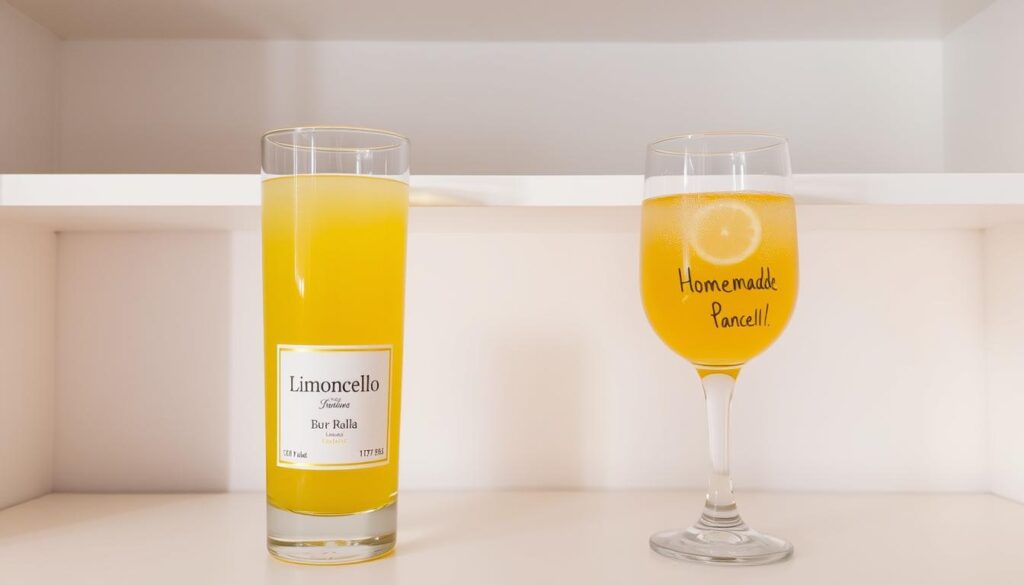
Mass-Produced Varieties: What to Know
Commercial or mass-produced Limoncello, on the other hand, is made on a larger scale using industrial processes that can streamline production and reduce costs. While this may result in a more consistent product, it often lacks the unique character and depth of flavor found in artisanal Limoncello.
Consumers of commercial Limoncello should be aware of the potential for added preservatives or artificial flavorings, which can alter the taste and overall experience. Checking the ingredient list and production methods can provide insights into the quality of the product.
By comparing commercial and homemade Limoncello, consumers can make informed choices based on their preferences for quality, taste, and production methods.
How to Make Limoncello at Home
Limoncello, a classic Italian liqueur, can be easily made at home with just a handful of ingredients and basic equipment. This DIY project is not only fun but also rewarding, resulting in a delicious digestif that’s perfect for sipping after dinner or giving as a gift.
Equipment and Ingredients You’ll Need
To start, you’ll need a few simple ingredients and some basic kitchen equipment. The essential ingredients include high-quality lemons, a high-proof alcohol base, sugar, and water. For equipment, you’ll need a large glass jar with a lid for infusion, a fine-mesh strainer or cheesecloth for filtering, and bottles for storing the finished Limoncello.
Key Ingredients:
- 4-6 organic lemons
- 1 liter high-proof alcohol (at least 95% ABV)
- 2 cups granulated sugar
- 2 cups water
Step-by-Step Limoncello Recipe
The process of making Limoncello involves three main phases: infusion, creating the sugar syrup, and combining and aging the mixture.
Phase 1: Infusion Process
The infusion process is crucial for extracting the lemon flavor and oil into the alcohol base. Start by thoroughly washing and drying the lemons. Use a vegetable peeler to carefully remove the zest, avoiding the white pith. Place the zest in the large glass jar and cover it with the high-proof alcohol. Seal the jar and let it infuse in a cool, dark place for 7-10 days, shaking the jar daily.
While the infusion is taking place, prepare the sugar syrup by dissolving the granulated sugar in water over low heat, stirring until the sugar is completely dissolved. Let the syrup cool to room temperature.
Phase 3: Combining and Aging
After the infusion period, strain the alcohol mixture through a fine-mesh strainer or cheesecloth into a large bowl, discarding the lemon zest. Combine the infused alcohol with the cooled sugar syrup in a large pitcher or jug. Stir well to combine. Transfer the Limoncello to bottles and store them in the freezer to chill. Limoncello is best served cold, so it’s ready to enjoy after a few hours in the freezer.
Common Mistakes to Avoid
When making Limoncello at home, there are a few common pitfalls to watch out for. First, be sure to use high-quality ingredients, including organic lemons and a pure alcohol base, to ensure the best flavor. Second, avoid including the white pith of the lemon in the infusion, as it can impart a bitter taste. Finally, be patient and allow the Limoncello to age properly to achieve a smooth, well-balanced flavor.
| Phase | Description | Duration |
|---|---|---|
| Infusion | Steep lemon zest in alcohol | 7-10 days |
| Sugar Syrup | Dissolve sugar in water | Until dissolved |
| Aging | Store Limoncello in freezer | At least a few hours |
Modern Limoncello Variations and Adaptations
Limoncello, a traditional Italian liqueur, is being reimagined in modern variations that blend tradition with innovation. As consumers look for new experiences, producers are responding with creative twists on the classic recipe.

Cream Limoncello
One of the most popular modern variations is Cream Limoncello, which combines the bright citrus flavor of traditional Limoncello with the richness of cream. This luxurious twist is perfect for desserts or as a creamy addition to coffee and cocktails. The addition of cream not only changes the texture but also mellows out the citrus, making it appealing to those who find traditional Limoncello too sharp.
Fruit Variations Beyond Lemon
While lemon is the classic choice for Limoncello, producers are now experimenting with other citrus fruits like oranges, limes, and grapefruits, as well as non-citrus fruits. These fruit variations offer a fresh take on the traditional recipe, creating a diverse range of flavors that can appeal to different tastes. For instance, a Limoncello made with blood oranges can add a beautiful ruby color and a slightly different citrus profile.
Low-Sugar and Alternative Sweetener Options
With the growing demand for lower-sugar alcoholic beverages, some producers are creating low-sugar Limoncello or using alternative sweeteners like honey or agave syrup. These variations cater to health-conscious consumers who still want to enjoy the essence of Limoncello without the high sugar content. Using alternative sweeteners can also introduce new flavor dimensions, further expanding the possibilities for Limoncello.
These modern variations and adaptations show that Limoncello is not just a traditional liqueur but a versatile spirit that can be enjoyed in many different ways. Whether you’re looking for a creamy dessert liqueur, a fruit-infused twist, or a lower-sugar option, there’s a Limoncello variation out there to suit your taste.
How to Properly Serve and Enjoy Limoncello
To fully appreciate Limoncello, one must consider the nuances of its serving temperature, glassware, and pairing options. Serving Limoncello is not just about pouring it into a glass; it’s about creating an experience that honors its Italian heritage.
The Ideal Temperature and Glassware
Limoncello is typically served chilled, with the ideal serving temperature ranging between -10°C to 0°C (14°F to 32°F). This chilling enhances its citrus flavors and aroma. For glassware, Limoncello is traditionally served in small, chilled glasses that are often tulip-shaped or have a flared rim. These glasses concentrate the aroma and allow the drinker to appreciate the liqueur’s clarity and color.
Traditional Serving Customs
In Italy, Limoncello is often served as a digestif, consumed after meals to aid digestion. It’s customary to serve it chilled, straight from the freezer, and in small quantities. The serving is usually accompanied by a gesture of hospitality, reflecting the Italian culture’s emphasis on welcoming and generosity.
Key serving customs include:
- Serving Limoncello chilled, typically straight from the freezer.
- Using it as a digestif after meals.
- Serving it in small quantities to savor its flavor.
Pairing Limoncello with Food
Limoncello’s citrus flavor makes it versatile for pairing with various dishes. It pairs well with desserts like lemon sorbet, tiramisù, and panna cotta, enhancing their flavors. For a more contemporary approach, Limoncello can be paired with seafood, particularly dishes featuring lemon or citrus marinades.
Some popular pairing suggestions include:
- Lemon-based desserts.
- Seafood dishes, especially those with citrus flavors.
- Cheesecake and other creamy desserts.
By understanding the proper way to serve and enjoy Limoncello, one can fully appreciate its unique qualities and the rich cultural context from which it originates.
Creative Uses for Limoncello Beyond Sipping
Beyond its traditional role as a digestif, Limoncello has become a versatile ingredient in modern mixology and culinary arts. Its bright, citrusy flavor makes it an excellent addition to various recipes, enhancing both the taste and the experience.
Limoncello in Cocktails
Limoncello’s vibrant lemon flavor is a perfect match for many spirits, creating refreshing and zesty cocktails. It’s a popular choice for mixologists looking to add a citrus twist to classic recipes.
Classic Limoncello Cocktail Recipes
Some standout Limoncello cocktails include the Limoncello Spritz, a refreshing mix of Limoncello, Prosecco, and soda water, and the Limoncello Collins, which combines Limoncello with gin, lemon juice, and a splash of soda. Experimenting with different combinations can lead to the creation of unique and delicious cocktails.
- Limoncello Spritz: Limoncello, Prosecco, soda water
- Limoncello Collins: Limoncello, gin, lemon juice, soda
- Limoncello Martini: Limoncello, vodka, lemon zest
Cooking and Baking with Limoncello
Limoncello is not just limited to mixology; it’s also a fantastic ingredient in cooking and baking. It can be used to add depth and a citrusy flavor to various dishes, from seafood to desserts.
Incorporating Limoncello into recipes can be as simple as adding a splash to your favorite sauce or using it as a marinade for grilled meats and vegetables.
Limoncello in Desserts
Limoncello desserts are a delightful way to enjoy this Italian liqueur. From Limoncello cheesecakes to lemon sorbet infused with Limoncello, the possibilities are endless. Limoncello cannoli and Limoncello tiramisù are also popular desserts that incorporate this versatile liqueur.
A simple way to start is by making a Limoncello syrup to drizzle over ice cream or cake, adding a bright and citrusy flavor to your desserts.
Conclusion: The Enduring Appeal of Limoncello
Limoncello’s lasting popularity stems from its rich history and cultural significance in Italian liqueur culture. This iconic digestif has evolved from a family tradition to a global phenomenon, captivating audiences with its vibrant citrus flavor and versatility.
The appeal of Limoncello lies in its simplicity and the craftsmanship involved in its production. Whether enjoyed traditionally as a chilled digestif or used creatively in cocktails and desserts, Limoncello embodies the essence of Italian hospitality and culinary artistry.
As a symbol of Italian liqueur culture, Limoncello continues to inspire new generations of enthusiasts and producers alike. Its enduring appeal is a testament to the power of tradition, quality ingredients, and the joy of sharing moments with others.
Whether you’re savoring Limoncello at an Italian dinner table or experimenting with it in your own kitchen, its charm is undeniable. As you explore the world of Limoncello, you’ll discover why it remains a beloved and integral part of Italian heritage, contributing to its Limoncello appeal that transcends borders and cultures.
FAQ
What is Limoncello?
Limoncello is a traditional Italian digestif made from lemon zest, typically served chilled as a digestif after meals.
How is Limoncello traditionally made?
Traditional Limoncello production involves infusing lemon zest in a high-proof alcohol, then mixing it with a sugar syrup, and finally filtering and bottling the liqueur.
What type of lemons are best for making Limoncello?
The best lemons for Limoncello are typically the Sorrento or Sfumato varieties, known for their high oil content and flavor profile.
Can I make Limoncello at home?
Yes, you can make Limoncello at home using a simple recipe involving lemon zest, alcohol, sugar, and water, and following proper infusion and filtering techniques.
What is the ideal way to serve Limoncello?
Limoncello is best served chilled, typically between 32°F and 40°F, in small glasses, and often as a digestif after meals.
How can I use Limoncello beyond sipping it?
Limoncello can be used in various ways, including in cocktails, as an ingredient in cooking and baking, and as a flavor enhancer in desserts.
What are some modern variations of Limoncello?
Modern variations include cream Limoncello, fruit variations beyond lemon, and low-sugar or alternative sweetener options, offering diverse twists on the traditional recipe.
How do I store Limoncello?
Limoncello should be stored in the freezer to preserve its flavor and texture, and it’s best consumed within a few months for optimal taste.
What is the difference between commercial and homemade Limoncello?
Commercial Limoncello is often mass-produced with standardized recipes and methods, whereas homemade Limoncello allows for personalization and variation in ingredients and techniques.
Can Limoncello be paired with food?
Yes, Limoncello can be paired with various foods, particularly desserts, and its citrus flavor complements a range of Italian dishes and sweets.

